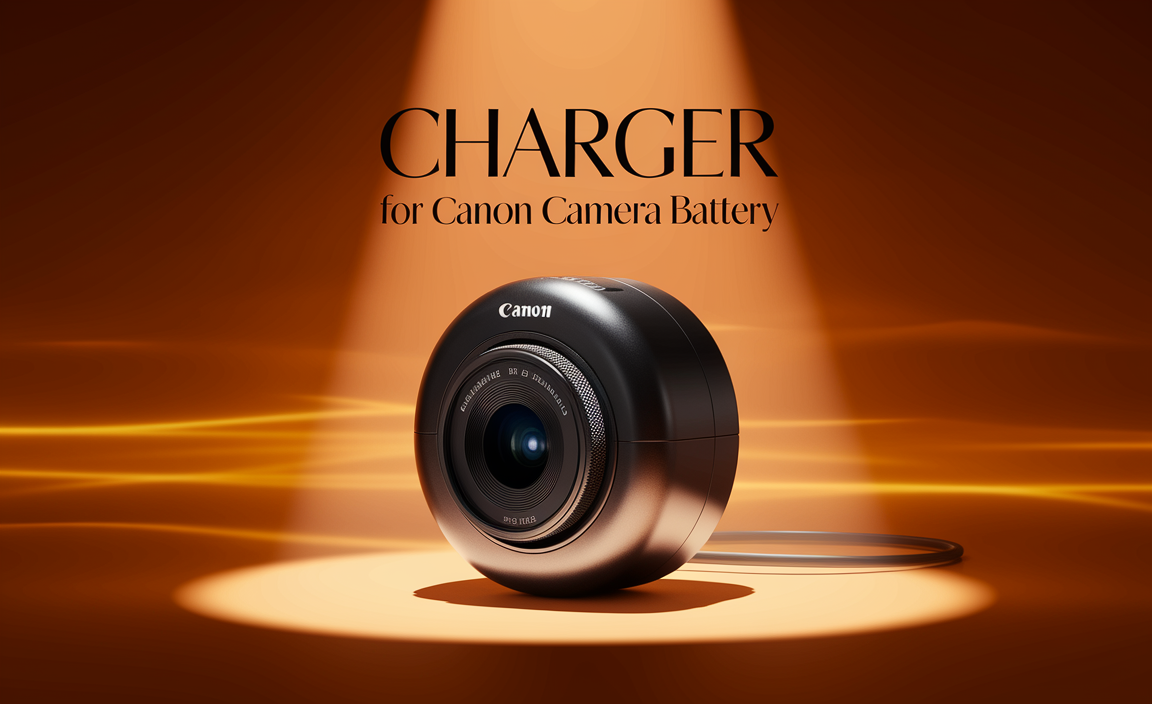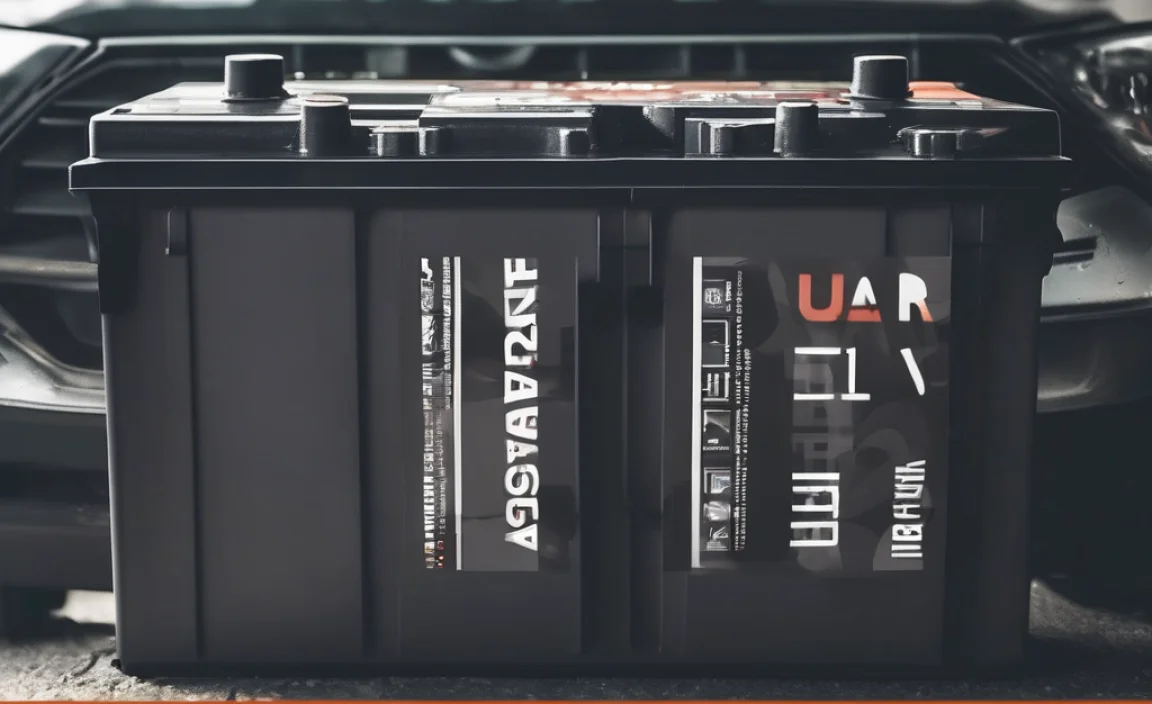Quick Summary
Charging a lead acid car battery is straightforward with the right charger and a few safety steps, ensuring its longevity. This guide covers how to properly charge your battery to maintain peak performance and protect your warranty, making car battery care simple and reliable.
Is your car struggling to start? That familiar click, click, click can be a real headache, especially when you’re in a rush. Often, the culprit is a tired car battery. But before you think about an expensive replacement, did you know that proper charging can often revive it and even help keep its warranty intact? Many drivers worry about damaging their car battery or voiding its warranty when trying to charge it themselves. It sounds complicated, but it’s actually quite manageable when you know the simple steps. This guide will walk you through everything you need to know to safely and effectively charge your lead acid car battery, giving you the confidence to tackle the job. We’ll demystify the process, cover the essential tools, and guide you through each step for a successful charge.
Understanding Your Lead Acid Car Battery
Your car’s lead acid battery is its powerhouse, starting the engine and running essential electronics. These batteries are reliable workhorses, but like any battery, they can lose their charge over time or due to various factors like extreme temperatures, short trips, or leaving lights on. A lead acid battery works through a chemical reaction involving lead plates and sulfuric acid. When the battery discharges, this reaction reverses, and charging is essentially reversing that process to store energy.
Why Charging is Sometimes Better Than Replacing
Many people automatically assume a dead car battery needs replacing. However, a battery that has simply discharged might be perfectly fine with a good charge. Regular charging can:
- Saves Money: Charging is far cheaper than buying a new battery.
- Extends Battery Life: Proper charging can prevent sulfation, a common cause of battery failure, thus extending its lifespan.
- Maintains Warranty: Many car battery warranties require proper maintenance, and ensuring your battery is charged can be part of that. A dead battery if not attended to could lead to issues that might affect warranty claims.
What Does “Proven Warranty” Mean for Car Batteries?
When we talk about a “proven warranty” for your car battery, it means the manufacturer stands behind their product for a specified period. This warranty often has conditions. One crucial, though sometimes overlooked, condition is maintaining the battery. If your battery suffers damage due to neglect or improper use (like letting it sit discharged for too long), a warranty claim might be denied. Understanding how to charge and maintain your battery correctly is key to ensuring it’s covered if a problem does arise within the warranty period. Always check your specific battery’s warranty documentation for details.
Essential Tools and Safety Precautions
Before you begin charging, gathering the right tools and prioritizing safety is crucial. Working with car batteries involves handling acid and electricity, so a little preparation goes a long way. Here’s what you’ll need:
What You’ll Need:
- Battery Charger: A smart charger designed for 12-volt lead acid batteries is highly recommended. These chargers automatically adjust voltage and current, preventing overcharging.
- Safety Glasses: To protect your eyes from any potential acid splash or sparks.
- Rubber Gloves: To protect your skin from battery acid.
- Wire Brush or Battery Terminal Cleaner: For cleaning battery terminals and cable connectors to ensure a good connection.
- Wrench or Pliers: To disconnect and reconnect battery terminals.
- Owner’s Manual: For both your vehicle and your battery charger.
Safety First!
Lead acid batteries contain sulfuric acid, which is corrosive. They also produce hydrogen gas, which is highly flammable. Always follow these safety guidelines:
- Work in a well-ventilated area: Never charge a battery in an enclosed space like a garage with the door shut.
- Wear protective gear: Always wear safety glasses and gloves.
- No smoking or open flames: Keep any sparks, flames, or smoking materials far away from the battery.
- Avoid short circuits: Never let metal tools touch both battery terminals simultaneously.
- Check for damage: Ensure the battery case is not cracked or leaking before charging. If it is, do not charge it and dispose of it properly.
- Disconnect in the correct order: Always disconnect the negative (-) terminal first, then the positive (+). When reconnecting, connect the positive (+) terminal first, then the negative (-).
Types of Battery Chargers for Lead Acid Batteries
Not all chargers are created equal. For lead acid batteries, especially for maintaining a warranty, using the right type of charger is important. Here are the common types:
1. Manual Chargers (Older Style)
These are simpler chargers but require more attention. You set a specific amperage and voltage, and they deliver a continuous charge. They are prone to overcharging if you’re not careful, which can damage the battery and potentially affect your warranty.
2. Automatic/Smart Chargers
These are the best choice for most users. They monitor the battery’s charge level and adjust the charging rate accordingly. Many have multiple charging stages (bulk, absorption, float) and will automatically switch to a maintenance mode when the battery is full. This significantly reduces the risk of overcharging and is ideal for preserving battery health and potentially your warranty.
3. Trickle Chargers
These deliver a very low, slow charge over a long period. They are good for maintaining a charged battery that isn’t used daily. They can prevent deep discharge but are not ideal for reviving a significantly depleted battery quickly.
4. Solar Chargers
These use solar power to provide a slow trickle charge. They are excellent for maintaining battery charge on vehicles stored for extended periods or when a power outlet isn’t readily available. They typically work best in conjunction with a charge controller.
Recommendation: For ease of use, safety, and battery longevity, a quality automatic or smart charger designed for 12V lead acid batteries is the way to go. Using a charger that can prevent overcharging is key to protecting your battery’s internal components and adhering to recommended maintenance practices that often support warranty terms.
Step-by-Step Guide to Charging Your Lead Acid Car Battery
Charging your car battery doesn’t require a mechanic’s expertise. Follow these steps carefully, and you’ll be able to do it safely and effectively.
Step 1: Prepare the Battery and Vehicle
Ensure your vehicle is parked on a level surface. Turn off the engine and remove the keys from the ignition. Open the car’s hood to access the battery. Locate the battery terminals. They are usually marked with a “+” for positive and a “-” for negative. Clean any corrosion from the terminals and the cable clamps using a wire brush or terminal cleaner until they are shiny metal. This ensures a good connection for charging.
Step 2: Connect the Charger Clamps
Crucially Important: Ensure your battery charger is turned OFF or unplugged before connecting the clamps.
- Connect the Red Clamp: Attach the positive (+) clamp from the charger to the positive (+) terminal of the car battery.
- Connect the Black Clamp: Attach the negative (-) clamp from the charger to the negative (-) terminal of the car battery. Some manuals suggest connecting the negative clamp to a metal ground point on the engine block or chassis rather than directly to the battery’s negative terminal. This is a safety measure to minimize the risk of sparks near the battery, which can release flammable hydrogen gas. Consult your car and battery charger manuals for their specific recommendation.
Step 3: Set Up and Start the Charger
Consult your charger’s manual for specific instructions, as settings can vary. Generally:
- Plug the battery charger into a grounded electrical outlet.
- Turn the charger ON.
- Select the appropriate charging rate. For most standard car batteries, a “12V” setting is used. The amperage (Amps) setting depends on the charger and battery size. A lower amperage (e.g., 2-10 Amps) is safer and better for the battery’s health, especially for maintaining it, while higher amperage will charge faster but can put more stress on the battery. A “smart” charger will often manage this automatically.
Step 4: Monitor the Charging Process
Keep an eye on the battery charger’s indicator lights or display. Most smart chargers will show when the battery is charging, when it’s nearing full, and when it’s fully charged. You’ll want to let the battery charge until it’s full. The time it takes will depend on how discharged the battery was and the charger’s amperage. This can range from a few hours to over 24 hours for a deeply discharged battery.
Important Note: If your charger has a manual setting, avoid overcharging. Overcharging can cause the battery to overheat, boil the electrolyte, and permanently damage the battery plates, which will absolutely void your warranty. Smart chargers mitigate this risk.
Step 5: Disconnect the Charger
Once the charger indicates the battery is fully charged or switches to a maintenance/float mode:
- Turn the battery charger OFF.
- Unplug the charger from the electrical outlet.
- Carefully disconnect the negative (-) clamp from the battery terminal first.
- Then, disconnect the positive (+) clamp from the battery terminal.
Step 6: Test the Battery
After charging, start your car. If it cranks and starts normally, your charging was successful! If the battery still seems weak or won’t hold a charge, it might be time to consider a replacement. If you’re unsure, a mechanic can test the battery’s capacity with a specialized load tester.
When to Use a Battery Maintainer vs. a Charger
It’s important to distinguish between a battery charger and a battery maintainer (also called a trickle charger or float charger). Using the right device for the situation is key to battery health and longevity.
Battery Charger
Purpose: To replenish a significantly discharged battery. Chargers deliver higher amperage to quickly bring a battery back up to a usable charge level.
When to Use:
- Your car won’t start.
- The battery has been drained by leaving lights on or due to a faulty alternator.
- You suspect the battery is low on charge.
Caution: Overcharging can occur if not monitored, especially with older manual chargers. Smart chargers are designed to prevent this.
Battery Maintainer (Trickle/Float Charger)
Purpose: To keep a fully charged battery topped up. Maintainers deliver a very low, steady current to compensate for the battery’s natural self-discharge rate. They are ideal for preventing a battery from becoming deeply discharged when a vehicle is not in use regularly.
When to Use:
- Storing a vehicle for an extended period (weeks or months).
- Vehicles used for very short trips frequently, which don’t allow the alternator to fully recharge the battery.
- Maintaining a battery that is already fully charged.
Benefit: Prevents deep discharge, which is a common cause of battery damage and reduced lifespan. This consistent maintenance is excellent for ensuring your battery stays in good condition, which can be beneficial for warranty claims.
Using a maintainer on a deeply discharged battery is not recommended; it won’t have enough power to bring the charge back up effectively. Think of it this way: a charger is like filling a nearly empty gas tank, while a maintainer is like topping it off if it’s already full.
Factors Affecting Battery Lifespan and Warranty
Several factors can influence how long your lead acid car battery lasts and whether it remains covered by its warranty.
Environmental Conditions
- Extreme Heat: High temperatures accelerate battery degradation, causing components to break down faster.
- Extreme Cold: Cold weather makes it harder for the battery to deliver power, and a weakened battery is more susceptible to freezing if it’s discharged.
Driving Habits
- Short Trips: Frequent short journeys don’t give the alternator enough time to fully recharge the battery, leading to a gradual state of discharge.
- Infrequent Use: A car that sits for long periods will experience natural self-discharge, and if it dips too low, it can cause damage.
Electrical System Issues
- Faulty Alternator: An alternator that isn’t charging the battery properly will lead to a chronically discharged battery.
- Parasitic Drain: This is when a component in the car continues to draw power even when the vehicle is off, slowly draining the battery.
- Accessory Use: Leaving lights, radio, or other accessories on with the engine off can drain the battery.
Battery Maintenance
- Corrosion: Dirty or corroded terminals impede the flow of electricity and charging.
- Proper Charging: Allowing the battery to sit discharged for extended periods can lead to sulfation, a crystalline buildup on the plates that reduces capacity and can permanently damage the battery. This is often cited as a reason to deny warranty claims.
- Water Levels (for serviced batteries): Some older batteries require checking and topping up electrolyte levels with distilled water. If they dry out, they are ruined. Most modern car batteries are “maintenance-free” and sealed.
Regularly checking your battery’s condition and employing good charging habits, like using a battery maintainer for infrequent use, can significantly extend its life and help ensure it’s properly cared for, which can be crucial for maintaining a warranty agreement with the manufacturer.
Comparing Lead Acid Battery Warranty Terms
Car battery warranties can vary significantly from one manufacturer to another. Understanding these differences is key to making an informed purchase and knowing what to expect if you need to make a claim.
Common Warranty Types
Most lead acid car batteries come with one of two main types of warranties:
1. Free Replacement Warranty
This is the most common and generally the most consumer-friendly. It covers a specific period (e.g., 1, 2, or 3 years) during which the battery can be replaced free of charge if it fails. Sometimes, there’s a prorated period after that, where you might get a discount on a new battery based on how long you’ve owned the old one.
2. Prorated Warranty
In a prorated warranty, if the battery fails outside the initial free replacement period, you won’t get a full free replacement. Instead, you’ll pay a portion of the cost for a new battery, with the price determined by how long you’ve had the original battery compared to its total warranty term. For example, a 5-year prorated warranty might cover 100% for the first 2 years, then 50% for years 3-4, and 25% for year 5.
What Voids a Car Battery Warranty?
Manufacturers typically list conditions that will void the warranty. These commonly include:
- Physical Damage: Cracks, leaks, or damage caused by improper installation.
- Freezing: If the battery freezes, it’s often due to being discharged, which is seen as neglect.
- Overcharging: Damage caused by using an incorrect charger or a faulty charging system that overcharges the battery.
- Deep Discharge and Neglect: Allowing the battery to remain deeply discharged for extended periods, leading to sulfation.
- Modification: Tampering with the battery or its components.
- Improper Use: Using the battery in applications it’s not designed for (e.g., deep cycle applications for a starting battery).
The emphasis on proper charging and maintenance in this article is directly linked to avoiding many of these common warranty voiding conditions.
Tips for Warranty Claims
- Keep your receipt: Proof of purchase is essential.
- Record the installation date: Note when the battery was put into service.
- Understand the terms: Read your warranty document carefully.
- Document issues: If you suspect a problem, note the symptoms and any charging attempts.
- Regular checks: Maintain the battery’s cleanliness and ensure it’s charged, especially if the car is used infrequently.
When purchasing a new battery, consider the warranty terms as a significant factor. A longer, free replacement warranty often indicates the manufacturer’s confidence in their product’s quality and longevity.
Troubleshooting Common Car Battery Charging Issues
Even with the best intentions, you might run into a few bumps in the road when charging your car battery. Here’s how to address some common problems:
Battery Won’t Accept Charge
Possible Causes:
- Deeply discharged battery (sulfation): If a battery has been left discharged for too long, the sulfate crystals can harden, making it very difficult or impossible for a standard charger to initiate a charge. Some advanced chargers have a “desulfation” mode.
- Internal damage: The battery



